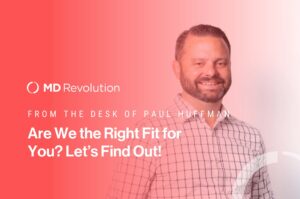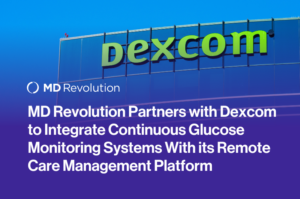The combined approach is leading to higher provider and patient satisfaction, better care for patients most in need, and increased revenue opportunities.
For practices looking to scale their care coordination strategy, there is a long list of reasons why a combined chronic care management (CCM) and remote patient monitoring (RPM) program is a winning formula. Currently working for hundreds of practices around the country, the combined approach is leading to higher provider and patient satisfaction, better care for patients most in need, and increased revenue opportunities.
Let’s define the equation. CCM is a model of care designed to support patients with diabetes, arthritis, heart disease, and other long-term conditions. Treatment is highly collaborative and includes routine, non-face-to-face monitoring of the patient’s health, medication levels, care coordination, and more.
RPM leverages technology, such as digital devices and sensors, to remotely collect and monitor a patient’s health status. Overseeing everything from vital signs to glucose levels, RPM allows patients to stay connected to their providers, and engaged in their care, from their homes.Often, RPM programs include trained medical teams that are available through a mobile app or a video chat in case the patient has questions.
Here are four of the top benefits practices can experience from a combined approach:
- Happier, healthier patients. The combined RPM and CCM approach—broadly referred to as remote care management—provides significant advantages to patients. Most patients qualify for both initiatives and, once they are onboarded, become highly engaged in both the programs and their individual remote care plans. Patients don’t know which program they’re enrolled in, nor would they likely know if they are enrolled in both. However, they do understand and care about the strong relationship between themselves, their doctor, and the care coordinators that they interact with. When technology can support that symbiotic relationship, the practice provides exceptional whole-person care.
- Better reimbursement potential. Dual enrollment of patients into a CCM and RPM program also improves the practice’s bottom line, maximizing reimbursement for remote care services, without placing an additional burden on physicians and staff. In fact, many practitioners find that they are already doing much of the work associated with both programs, but since they aren’t offering a formal program, they are missing out on the full reimbursement potential. Essentially, a dual program enables the practice to more appropriately categorize RPM and CCM services, and therefore, compliantly capture the services delivered that are best suited for each patient’s needs.
- Easily scalable remote care management. From a practice perspective, Chronic Care Management and Remote Patient Monitoring go hand-in-hand. The program enables practices to scale their programs quickly and easily—engaging and retaining most of their eligible patients. It’s also very easy to introduce, enroll, and onboard patients in both programs simultaneously. For example, if a practice is providing chronic care management to its patients with heart failure, it could easily incorporate remote patient monitoring of hypertension for many of these patients as well. Since heart failure patients typically have hypertension as well, enrolling them in both programs would allow the practice to treat the patient more holistically.
- More accurate vitals measurements to inform clinical decision-making. While CCM programs entail only patient self-reported vitals, RPM measures vitals through electronic devices. Both forms of vitals reporting are important, because they provide more context into the patient’s perception of their own health (CCM), as well as what’s really occurring with their condition (RPM). This creates additional opportunities to identify gaps in patient care, adherence, or understanding, and as a result, enables practices to more fully engage patients and build stronger patient relationships.
Other top benefits of a combined RPM and CCM approach include:
- Improved patient adherence to care plans
- More patient engagement and accountability
- Early detection of health issues
- More personalized care
- Improved efficiency for providers
As practices face the aging patient population, ongoing staff shortages, and ongoing revenue strains, many are recognizing that a new approach to care is needed in order to continue thriving and providing optimal care to patients. A combined RPM and CCM approach can help.
While in-person office visits will always remain integral for maintaining physician-patient relationships and conducting in-depth annual evaluations, they can no longer remain a status quo. Rather, technology that facilitates ongoing RPM and CCM will empower a new paradigm of care.



